Hans G. Lemij
AIROGS: Artificial Intelligence for RObust Glaucoma Screening Challenge
Feb 10, 2023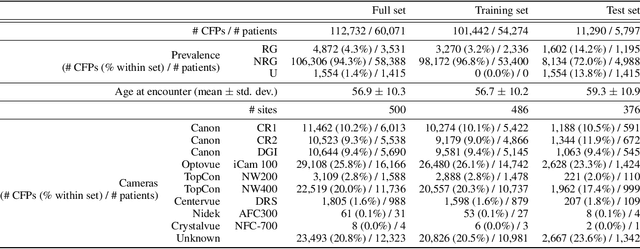
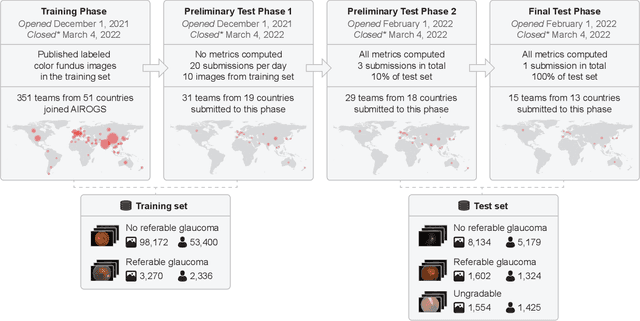
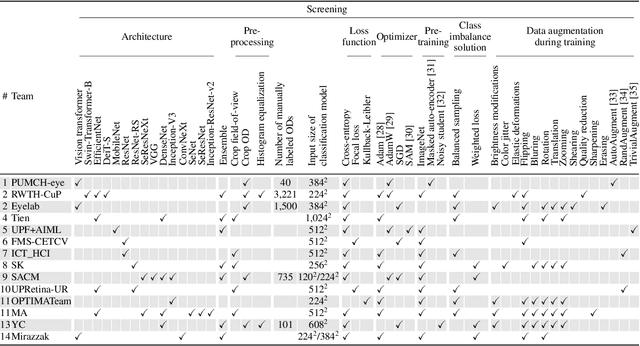
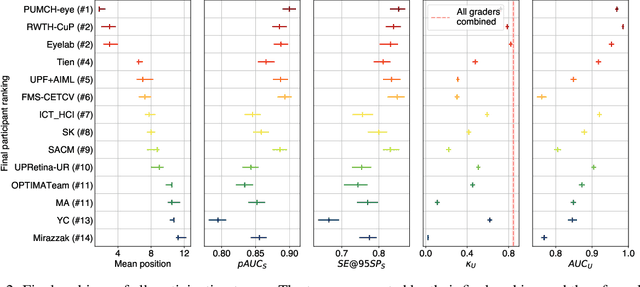
Abstract:The early detection of glaucoma is essential in preventing visual impairment. Artificial intelligence (AI) can be used to analyze color fundus photographs (CFPs) in a cost-effective manner, making glaucoma screening more accessible. While AI models for glaucoma screening from CFPs have shown promising results in laboratory settings, their performance decreases significantly in real-world scenarios due to the presence of out-of-distribution and low-quality images. To address this issue, we propose the Artificial Intelligence for Robust Glaucoma Screening (AIROGS) challenge. This challenge includes a large dataset of around 113,000 images from about 60,000 patients and 500 different screening centers, and encourages the development of algorithms that are robust to ungradable and unexpected input data. We evaluated solutions from 14 teams in this paper, and found that the best teams performed similarly to a set of 20 expert ophthalmologists and optometrists. The highest-scoring team achieved an area under the receiver operating characteristic curve of 0.99 (95% CI: 0.98-0.99) for detecting ungradable images on-the-fly. Additionally, many of the algorithms showed robust performance when tested on three other publicly available datasets. These results demonstrate the feasibility of robust AI-enabled glaucoma screening.
DenseUNets with feedback non-local attention for the segmentation of specular microscopy images of the corneal endothelium with guttae
Mar 21, 2022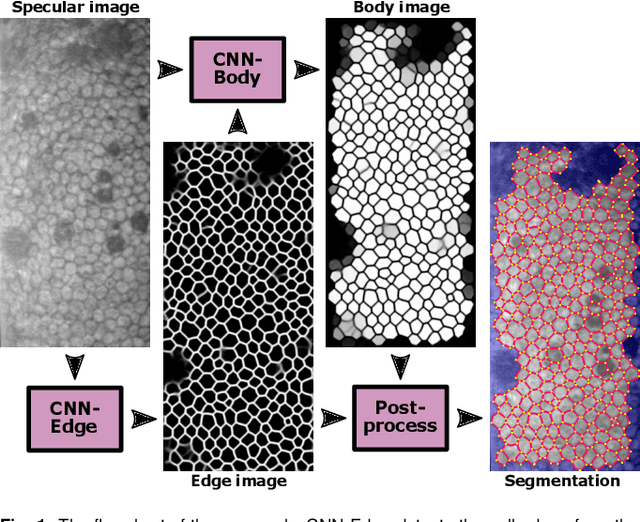
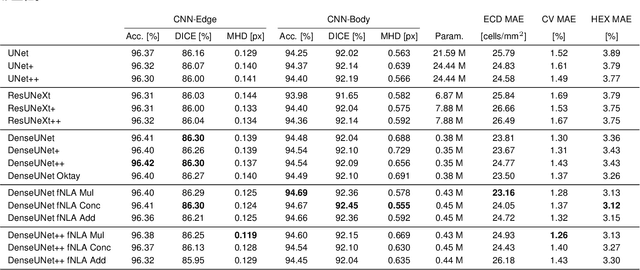


Abstract:To estimate the corneal endothelial parameters from specular microscopy images depicting cornea guttata (Fuchs dystrophy), we propose a new deep learning methodology that includes a novel attention mechanism named feedback non-local attention (fNLA). Our approach first infers the cell edges, then selects the cells that are well detected, and finally applies a postprocessing method to correct mistakes and provide the binary segmentation from which the corneal parameters are estimated (cell density [ECD], coefficient of variation [CV], and hexagonality [HEX]). In this study, we analyzed 1203 images acquired with a Topcon SP-1P microscope, 500 of which contained guttae. Manual segmentation was performed in all images. We compared the results of different networks (UNet, ResUNeXt, DenseUNets, UNet++) and found that DenseUNets with fNLA provided the best performance, with a mean absolute error of 23.16 [cells/mm$^{2}$] in ECD, 1.28 [%] in CV, and 3.13 [%] in HEX, which was 3-6 times smaller than the error obtained by Topcon's built-in software. Our approach handled the cells affected by guttae remarkably well, detecting cell edges occluded by small guttae while discarding areas covered by large guttae. Overall, the proposed method obtained accurate estimations in extremely challenging specular images.
Evaluation of an AI system for the automated detection of glaucoma from stereoscopic optic disc photographs: the European Optic Disc Assessment Study
Jun 04, 2019



Abstract:Objectives: To evaluate the performance of a deep learning based Artificial Intelligence (AI) software for detection of glaucoma from stereoscopic optic disc photographs, and to compare this performance to the performance of a large cohort of ophthalmologists and optometrists. Methods: A retrospective study evaluating the diagnostic performance of an AI software (Pegasus v1.0, Visulytix Ltd., London UK) and comparing it to that of 243 European ophthalmologists and 208 British optometrists, as determined in previous studies, for the detection of glaucomatous optic neuropathy from 94 scanned stereoscopic photographic slides scanned into digital format. Results: Pegasus was able to detect glaucomatous optic neuropathy with an accuracy of 83.4% (95% CI: 77.5-89.2). This is comparable to an average ophthalmologist accuracy of 80.5% (95% CI: 67.2-93.8) and average optometrist accuracy of 80% (95% CI: 67-88) on the same images. In addition, the AI system had an intra-observer agreement (Cohen's Kappa, $\kappa$) of 0.74 (95% CI: 0.63-0.85), compared to 0.70 (range: -0.13-1.00; 95% CI: 0.67-0.73) and 0.71 (range: 0.08-1.00) for ophthalmologists and optometrists, respectively. There was no statistically significant difference between the performance of the deep learning system and ophthalmologists or optometrists. There was no statistically significant difference between the performance of the deep learning system and ophthalmologists or optometrists. Conclusion: The AI system obtained a diagnostic performance and repeatability comparable to that of the ophthalmologists and optometrists. We conclude that deep learning based AI systems, such as Pegasus, demonstrate significant promise in the assisted detection of glaucomatous optic neuropathy.
 Add to Chrome
Add to Chrome Add to Firefox
Add to Firefox Add to Edge
Add to Edge